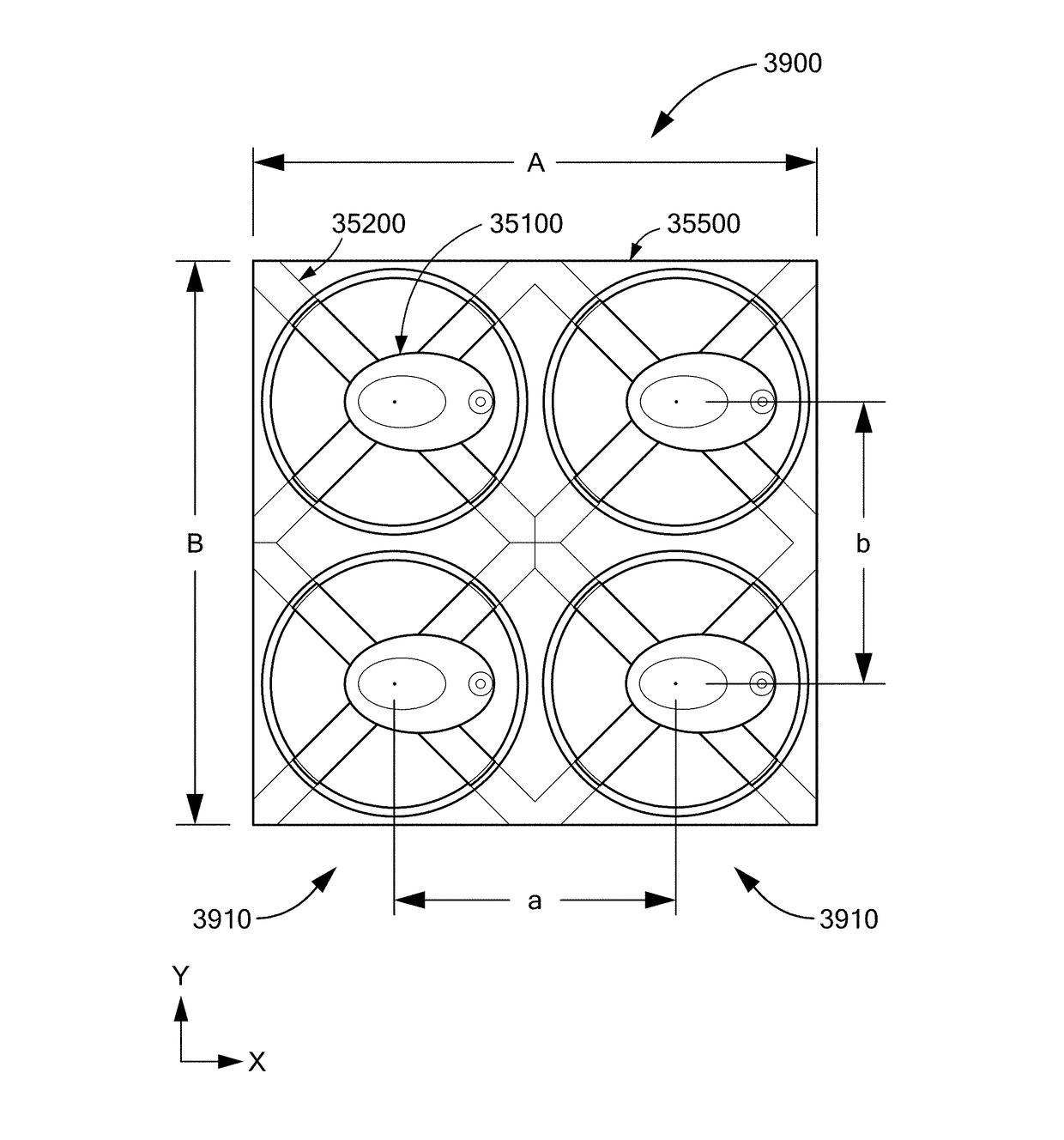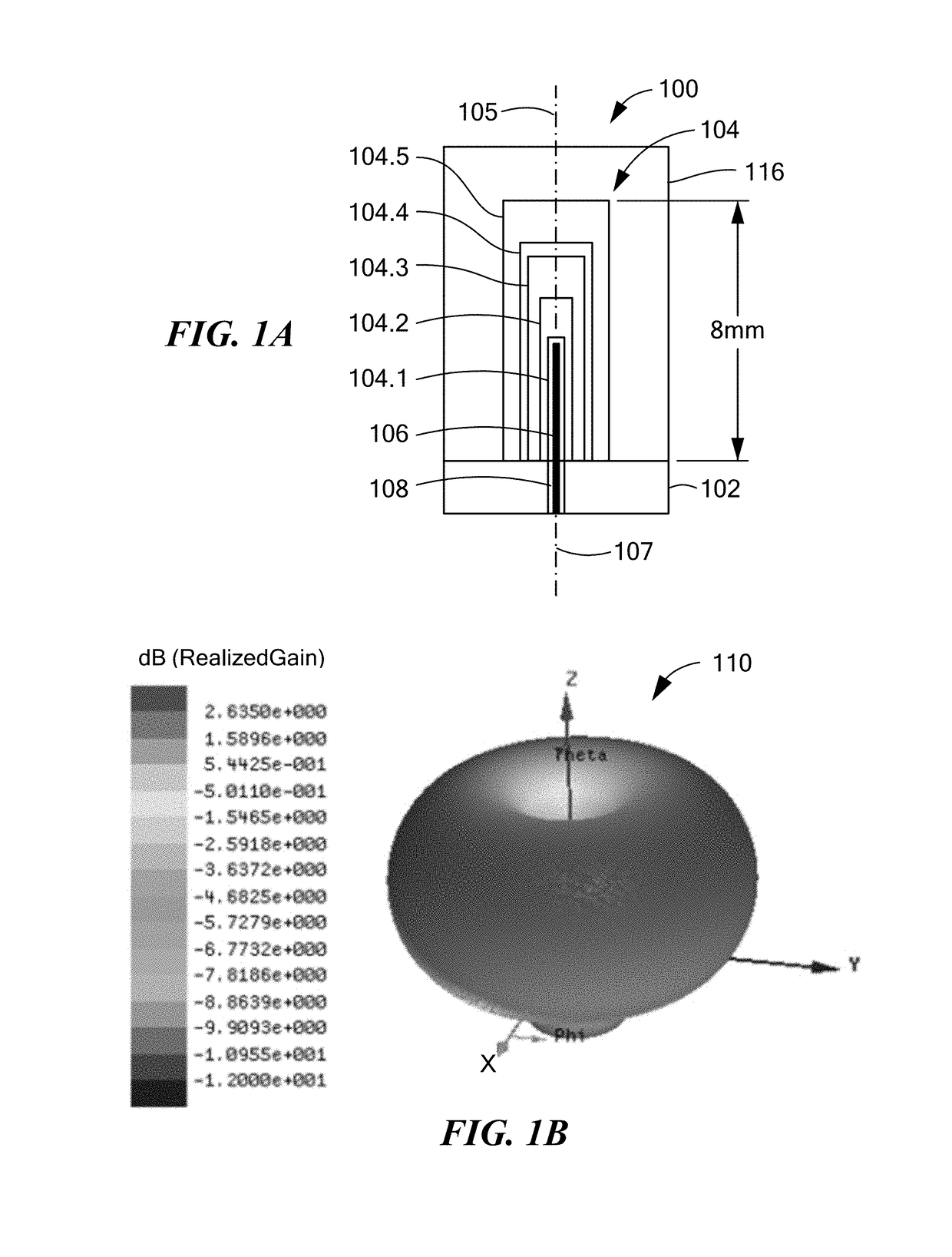Dielectric resonator antenna and method of making the same
a resonator antenna and dielectric technology, applied in the direction of antennas, antenna earthings, electrical devices, etc., can solve the problems of limited bandwidth, limited efficiency, limited gain,
- Summary
- Abstract
- Description
- Claims
- Application Information
AI Technical Summary
Benefits of technology
Problems solved by technology
Method used
Image
Examples
Embodiment Construction
[0082]Embodiments disclosed herein include different arrangements useful for building broadband dielectric resonator antenna (DRA) arrays, where the different arrangements employ a common structure of dielectric layers having different thicknesses, different dielectric constants, or both different thicknesses and different dielectric constants. The particular shape of a multilayer DRA depends on the chosen dielectric constants for each layer. Each multilayer shell may be cylindrical, ellipsoid, ovaloid, dome-shaped or hemispherical, for example, or may be any other shape suitable for a purpose disclosed herein. Broad bandwidths (greater than 50% for example) can be achieved by changing the dielectric constants over the different layered shells, from a first relative minimum at the core, to a relative maximum between the core and the outer layer, back to a second relative minimum at the outer layer. A balanced gain can be achieved by employing a shifted shell configuration, or by emp...
PUM
 Login to View More
Login to View More Abstract
Description
Claims
Application Information
 Login to View More
Login to View More - R&D
- Intellectual Property
- Life Sciences
- Materials
- Tech Scout
- Unparalleled Data Quality
- Higher Quality Content
- 60% Fewer Hallucinations
Browse by: Latest US Patents, China's latest patents, Technical Efficacy Thesaurus, Application Domain, Technology Topic, Popular Technical Reports.
© 2025 PatSnap. All rights reserved.Legal|Privacy policy|Modern Slavery Act Transparency Statement|Sitemap|About US| Contact US: help@patsnap.com



